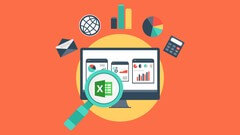Big Difference Between Data & Information

Big Difference Between Data & Information In the 21st century, the world of trade and business revolves around data and information. Multinational companies are trying to undertake provisions to be able to manage, analyze & gather insights from the data. The irony of fact is that the more the amount of collected data is available more are the more revelations that may be made by analyzing the Data.
Information Technology has caused a great impact on our daily lives and is avidly responsible for the growth of the implications of multiple Information technology tools and methods to make our lives convenient. Information technology is on a roll and plays an imperative role in our day-to-day lives. Information gathered can help us access the solutions that make tedious tasks much simpler.
What is Data?
Data is an assortment of facts or data, existing in the arrangement of either figures, text, symbols, description, or mere observations of entities, events, or things with a possibility of being analyzed and drawn extrapolations from. Data exists in a raw format because of which further analysis is needed to be able to draw meaningful insights from it.
Data may be recorded in multiple forms ranging from numbers, letters, characters, or images. For example, the computer data exists in the form of a binary code namely 0’s & 1’s, which is interpreted to derive a fact or a value. The units to define the binary code are: –
- 1 Bit = 0.25 nibble
- 1 Nibble = 4 bit
- 1 Byte = 2 nibble
- 1 Kilobyte = 1000 byte
- 1 Kibibyte = 1024 byte
- 1 Mebibyte = 1024 kibibyte
- 1 Gibibyte = 1024 Mebibyte
- 1 Tebibyte = 1024 Gibibyte
- 1 Pebibyte = 1024 Tebibyte
Data were initially stored in punch cards, which were later on replaced by magnetic tapes and then were followed by hard disk drives.
How many kinds of Data:
There are generally two kinds of data:
- Primary Data
- Qualitative Data
- Quantitative Data
- Secondary Data
- Internal Data
- External Data
What is Information?
Information is the systematic organization and assembly of data to acquire or develop ideas beneficial for the business. Unlike data, information is the critical aspect of the data which is responsible for generating insights and ideas post-analysis of data. To create and predict a plan of action that may be profitable for the business.
Difference between data and information with an example:
| Topic | Data Example | Information Example |
| Description | Unstructured Entities with a definite value are stored for future analysis to gain insights | Ideas and insights generated post-structured arrangement and analysis of data |
| Format | Unstructured values stored in the form of numbers, letters, and characters | Structured data representing an emerging trend post analysis |
| Representation | Represented in the form of tables, graphs or flowcharts | Represented as an insight or an idea post-analysis of a structured data |
| Meaning | Doesn’t showcase any due to random arrangement | Post-analysis of data may reveal new ideas thus giving it meaning |
| Interrelation | Data is information collected | Information is derived from data |
| Features | Exists in raw form and does not imply anything without analysis | Information is created post-data analysis to reveal meaningful insights |
| Interdependence | Does not depend on information | Cannot exist without data |
| Unit | Measured in bits & bytes | Measured mostly in units like quantity, time, etc |
| Decision making | Is not responsible for direct influence | Derives analytical rationality imperative for decision making |
| Researchers | Data acquired by researchers may not be useful without analysis | Information gathered by researchers comes in handy all the time |
What is Information in Business?
Data is the main source of any information that might come into the spotlight followed by execution and strategic success. So, without data, the result may not be achievable. A successful business derives its information from the analysis of the data collected from the market and post-data analysis with the help of the acquired information provides a greater scope of deriving success in the business venture.
The new trend of moving from data to information and from information to business intelligence has picked up its stride in the past decade. Every trade relies on data that is being generated to chart out a path for the future. Firms are employing this technique to gain an edge over their competitors in the market.
Business Information like its other sections in the information industry has several forms like news, credit & financial information, market research, IT research, and Industry Analysis. They can further be characterized into directories, periodicals, stats, government information, guides, handbooks, almanacs, and directories.
The Net has made it comparatively easier for editors to distribute business information, especially with the practice of subscription models that deliver content to their user base.
Market research doesn’t just stem from a linear source of data, it is rather an exhaustive process where analysts separate the good data from the noisy data, which is also the foundation for any successful business policy.
Today’s access to business information systems that are intended to support organizations in making important decisions through objective attainment has changed the way business information is employed. The system utilizes the resources provided in the majority of IT Infrastructure to gratify the needs of different units prevailing within a business enterprise.
Below is a graphic representation of how business information implicates itself in a business environment:-

The vital components of a business information system:-
- Decisions:
Decisions taken are not visible, but rather viewed
2. Dealings:
Transactions are more visible, but they are mostly implicated through complex computer-based algorithms
3. Information:
Information exists for the smooth running of the business in a competitive environment to achieve better results.
4. Occupations:
Can be detected as the workflow is recognized for these components to encompass the Business Information System
Conclusion :-
Information science and technology have gathered a budding grip in terms of technological transition. Technologies ranging from servers to cloud to smarter databases, in today’s era data can be processed within a blink of an eye. With speed comes responsibility and the ability to process data with even low-cost hardware units like SSDs (Solid State Drives), HDDs (Hard Disk Drives), and Cloud Services without the risk of any glitches. Establishments are now storing large amounts of data in the anticipation of processing them for futuristic meaningful insights that can help them drive organizational decisions or to predict future market dependability of their products and services.
From medical science, and education to space programs, data and information are resolving real-life snags at spectacular speed with the utilization of its various applications. Practically there is no limit to their insinuations across trades and the benefit they harbor respectively. So to repeat, these two notions coexist to provide us with treasured understandings that drive and enforce informed choices and successful outcomes.
Some useful links are Below:
To know more about Data analytics Certification Based Course







